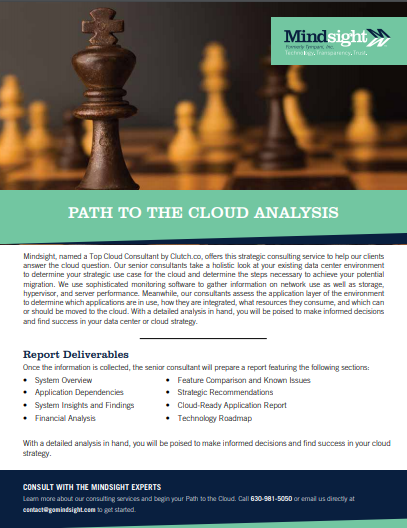November 13, 2018 by Siobhan Climer
While cloud for education applications and platforms are increasing in use across the U.S., many districts still rely on on-premise infrastructure. While the reasons school districts lag in cloud adoption are often complex, they are fundamentally tied to one thing: money. The data center is a huge piece of capital expenditure and investment; transitioning away from an on-prem system is daunting. But as the hardware in these data centers comes end-of-life, it’s worth taking a look at transitioning to the cloud.
Trends In Adoption Of Cloud For Education
Despite lingering misappropriated skepticism about security in the cloud – more on this in a minute – schools are moving towards adoption. In fact, the global cloud education market is estimated to reach $25.36 billion by 2021. In 2016, the market share was only $8 billion. So, how are school districts implementing the cloud for education? First, teachers use the cloud to support student learning and engagement. Whether through the creation of virtual teaching spaces or to improve accessibility for students across the network. IT departments can use the cloud to provide immediate scalability and flexibility, as well as support strategic backup and disaster recovery plans.
You can see an overview of what a path to the cloud might look like with our Path to the Cloud Analysis. Click here to view.
There are loads of ways districts are using the cloud for education initiatives:
Cost Effectiveness
 First things first, let’s clear up a misconception often perpetuated by cloud providers: the cloud is not necessarily cheaper than on-premise solutions. What the cloud does offer is an on-demand, pay-as-you-go model for the school that enables increased scalability. In addition, districts can also employ remote monitoring and management, allowing IT staff to focus on strategic initiatives instead of simply maintaining the environment. So, while the large infrastructure cost is simply spread out over time, districts can now be more agile, adapting to changing education policies and initiatives efficiently without wasting resources.
First things first, let’s clear up a misconception often perpetuated by cloud providers: the cloud is not necessarily cheaper than on-premise solutions. What the cloud does offer is an on-demand, pay-as-you-go model for the school that enables increased scalability. In addition, districts can also employ remote monitoring and management, allowing IT staff to focus on strategic initiatives instead of simply maintaining the environment. So, while the large infrastructure cost is simply spread out over time, districts can now be more agile, adapting to changing education policies and initiatives efficiently without wasting resources.
Virtual Classrooms
 Virtual learning environments have yet to be truly incorporated in the education environment but are absolutely one of the most significant benefits of using the cloud for education. By creating virtual spaces where teachers and students can collaborate, schools and higher education institutions can deliver face-to-face instruction and engaging experiences, regardless of time and place. Moreover, mobility dominates. Teachers and students access resources from many locations besides the classroom. The cloud creates a conduit for this type of work. Schools also use virtual classrooms to support distance learning and demonstration labs, video lectures, live chats, interactive learning activities, and incorporate instant feedback.
Virtual learning environments have yet to be truly incorporated in the education environment but are absolutely one of the most significant benefits of using the cloud for education. By creating virtual spaces where teachers and students can collaborate, schools and higher education institutions can deliver face-to-face instruction and engaging experiences, regardless of time and place. Moreover, mobility dominates. Teachers and students access resources from many locations besides the classroom. The cloud creates a conduit for this type of work. Schools also use virtual classrooms to support distance learning and demonstration labs, video lectures, live chats, interactive learning activities, and incorporate instant feedback.
Personalization
Many cloud applications provide personalized educational experiences for students. Students move at their own pace throughout the curriculum, enabling educators to better differentiate and support students at various stages of learning. Homework is no longer a one-size fits-all worksheet, but instead is automated and meets the student where they are: the very definition of scaffolding. Teachers can then focus more on creating and delivering the right lessons to support students in learning material.
More Storage
 The cloud provides almost unlimited storage space for the resources, assignments, and student data needed by schools to function. Software-as-a-Service (SaaS) platforms make it easy for students, teachers, administrators, and district staff to access the materials they need at anytime from anywhere. The increased room for storage coincides with improved resource management. Teachers no longer need to spend hours digging through old cabinets or filing cabinets for student files: they’re accessible from their classroom (or home) computers. That increased flexibility offers a huge advantage to the school district.
The cloud provides almost unlimited storage space for the resources, assignments, and student data needed by schools to function. Software-as-a-Service (SaaS) platforms make it easy for students, teachers, administrators, and district staff to access the materials they need at anytime from anywhere. The increased room for storage coincides with improved resource management. Teachers no longer need to spend hours digging through old cabinets or filing cabinets for student files: they’re accessible from their classroom (or home) computers. That increased flexibility offers a huge advantage to the school district.
Security
Data privacy and network security are paramount for IT leaders, and the cloud opens up the network perimeter, making security a more challenging endeavor. Yet the reality is that the security around the cloud is often more resilient than the methods employed by in-house IT teams by virtue of the resources available to cloud providers. What’s more? The security breaches that typically affect school districts are not cloud-based. More than 727 breaches occurred in schools between 2005 and 2014, and more than 14 million records were compromised, but most of those breaches were due to phishing attacks!
Using encryption – whether you use the cloud or not – is essential to protecting your network from breaches or attacks. Follow-up your protection with training and support for those using the cloud in the school. When teachers and administrators use the cloud, they need to understand how it works and how to use it effectively. Secure cloud solution like Cisco CloudLock and Umbrella help secure cloud applications against both internal and eternal threats.
To find out more about securing your network, join Mindsight for our upcoming event, Securing The Education Enterprise. Don Tufano, Director of Technology and Innovation for Riverside Schools, will lead a seminar discussion, Securing Your District’s Enterprise, in which he will share his experiences and facilitate a conversation around challenges and potential solutions.
The Cloud For Education – For Anyone – Takes Strategy
While the ways school districts and higher education institutions use the cloud is quite different, and often more complex, than other industries, the implementation methodology is much the same. Analyze our current usage and infrastructure, develop an optimization roadmap, validate and test your plan, and move workloads strategically. A technology partner like Mindsight can help you migrate successfully – contact us today.
To find out more about the cloud migration roadmap, check out The Ultimate Guide To Creating A Technology Roadmap.
Like what you read?
About Mindsight
Mindsight, a Chicago IT services provider, is an extension of your team. Our culture is built on transparency and trust, and our team is made up of extraordinary people – the kinds of people you would hire. We have one of the largest expert-level engineering teams delivering the full spectrum of IT services and solutions, from cloud to infrastructure, collaboration to contact center. Our highly-certified engineers and process-oriented excellence have certainly been key to our success. But what really sets us apart is our straightforward and honest approach to every conversation, whether it is for an emerging business or global enterprise. Our customers rely on our thought leadership, responsiveness, and dedication to solving their toughest technology challenges.
About The Author
Siobhan Climer, Science and Technology Writer for Mindsight, writes about technology trends in education, healthcare, and business. She previously taught STEM programs in elementary classrooms and museums, and writes extensively about cybersecurity, disaster recovery, cloud services, backups, data storage, network infrastructure, and the contact center. When she’s not writing tech, she’s writing fantasy, gardening, and exploring the world with her twin two-year old daughters. Find her on twitter @techtalksio.
Disaster Recovery In Schools: DR Template And Strategy Guide



